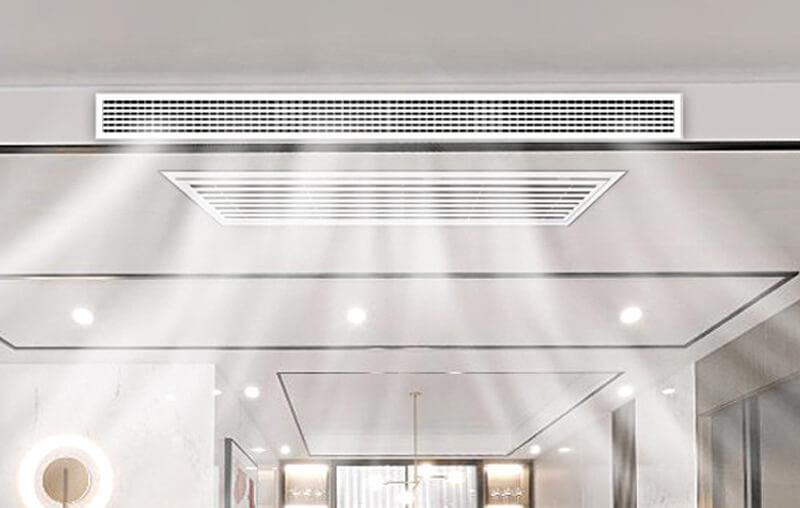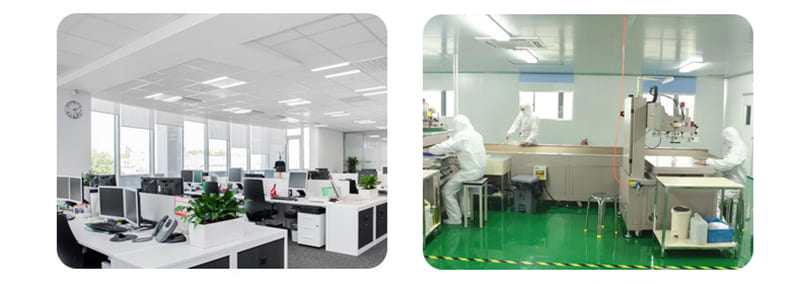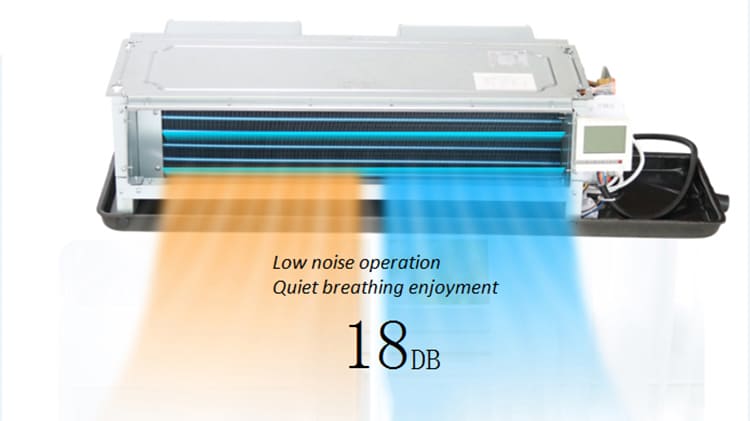In the quest for home comfort, one of the most common questions posed by homeowners and facility managers alike is, “How cold should my air conditioning be?” The answer, while seemingly straightforward, involves a complex interplay of factors ranging from personal comfort to energy efficiency. This comprehensive guide aims to unravel the intricacies of setting the right temperature in air conditioning systems.
The Quest for the Perfect Temperature
- A Balancing Act:
- Comfort vs. Efficiency: Finding the ideal AC temperature is a delicate balance between maintaining comfortable indoor conditions and optimizing energy usage.
- Individual Preferences and Environmental Impact: Personal comfort levels vary widely, and the environmental impact of air conditioning is a growing concern, choosing temperature settings all the more significant.
Let’s take a look at a video for reference:
Understanding Air Conditioning Basics
To make informed decisions about air conditioning temperatures, it’s essential to start with a basic understanding of how these systems operate and the factors that influence their performance.
How Air Conditioning Systems Work
- The Mechanics of Cooling:
- The Refrigeration Cycle: Explore the process of how air conditioners use refrigeration to remove heat from indoor air, thereby lowering the temperature.
- Components in Play: Understand the role of key components like the compressor, condenser, evaporator, and expansion valve in the cooling process.
The Concept of ‘Ideal Temperature’
- Balancing Factors for Optimal Comfort:
- Subjectivity in Comfort: Recognize that comfort is subjective, and what feels cold to one person may be pleasant to another.
- Standard Temperature Range: Discuss the commonly accepted temperature range for comfort and efficiency in residential and commercial settings.
Factors Affecting Perceived Temperature
- More Than Just the Thermostat Setting:
- Role of Humidity: Delve into how humidity levels can affect how we perceive temperature, making the air feel warmer or cooler.
- Air Movement and Quality: Consider how factors like air circulation and purity can impact the sensation of coolness or warmth in a space.
Laying the Groundwork for Effective Temperature Control
Understanding these air conditioning fundamentals is crucial in determining the most suitable temperature settings for your space. This knowledge not only helps in achieving comfort but also plays a significant role in the efficient operation of your AC system.

Factors Influencing Optimal AC Temperature
Determining the ideal temperature setting for your air conditioning involves considering various factors that influence both comfort and efficiency.
Personal Comfort Preferences
- Individual Variations in Temperature Sensitivity:
- Subjective Nature of Comfort: Understand that comfort levels vary greatly among individuals, influenced by factors such as age, activity level, and personal preference.
- Adjusting for Occupant Comfort: Consider the needs of all occupants, aiming for a temperature that accommodates the majority comfortably.
Humidity and Air Quality Impact
- The Interplay of Temperature and Humidity:
- Influence of Humidity Levels: Explore how higher humidity can make air temperatures feel warmer, affecting the comfort level.
- Air Quality Considerations: Good air quality is vital for comfort and health. Discuss how air conditioning can help in filtering and circulating air, thus impacting perceived temperature and comfort.
Energy Efficiency and Cost Implications
- Balancing Comfort with Energy Usage:
- Optimizing Temperature for Efficiency: Delve into how slight adjustments in temperature settings can lead to significant energy savings.
- The Cost-Benefit Analysis: Understand the financial impact of temperature settings on energy bills, emphasizing the importance of an energy-efficient approach.
Health and Environmental Considerations
When setting your air conditioner’s temperature, it’s important to consider the health implications and environmental impact of your choices.
Health Implications of AC Temperatures
- Maintaining Healthy Indoor Environments:
- Avoiding Extreme Cold Settings: Discuss the health risks associated with overly cold indoor temperatures, such as respiratory problems and discomfort.
- Benefits of Moderate Temperatures: Emphasize the health benefits of maintaining a moderate and consistent indoor temperature.
Environmental Impact of Air Conditioning
- Understanding the Eco-Friendly Perspective:
- Reducing Carbon Footprint: Explore how optimal temperature settings can contribute to reducing energy consumption and, consequently, lower greenhouse gas emissions.
- Sustainable Practices in Air Conditioning: Offer insights into practices that make air conditioning more environmentally friendly, such as using eco-friendly refrigerants and energy-efficient models.
Creating a Balance
- Harmonizing Health and Sustainability:
- The Middle Ground: Advocate for a balanced approach that ensures comfort and health while also being mindful of the environment.
- The Role of Smart Technologies: Highlight how modern technologies like programmable thermostats and smart home systems can help in achieving this balance.
Balancing Comfort with Energy Efficiency
Finding the right balance between maintaining comfortable indoor temperatures and optimizing energy efficiency is crucial in air conditioning use. This section explores strategies to achieve this balance effectively.
Strategies for Energy-Efficient Comfort
- Optimal Temperature Settings:
- The 78-Degree Guideline: Discuss the commonly recommended setting of 78 degrees Fahrenheit for summer cooling, explaining how and why this temperature strikes a balance between comfort and energy savings.
- Adjusting Based on Presence: Consider lowering the AC’s intensity when the house or building is unoccupied, and adjusting it for comfort when occupants are present.
Using Technology to Enhance Efficiency
- Leveraging Smart Controls:
- Programmable Thermostats: Explain how programmable thermostats can automatically adjust temperatures based on time of day and occupancy, reducing energy use without sacrificing comfort.
- Smart Home Integration: Delve into how integrating AC systems with smart home technology can lead to more precise temperature control and energy efficiency.
The Role of Home Insulation and Ventilation
- Complementary Factors in Efficiency:
- Insulation Improvements: Discuss how proper insulation can significantly reduce the load on air conditioning systems by maintaining consistent indoor temperatures.
- Effective Ventilation: Explore the importance of good ventilation in enhancing air quality and reducing the need for intense air conditioning.

The Cost Factor
The temperature setting on your air conditioner not only affects comfort and efficiency but also has a direct impact on your energy costs. This section covers how temperature choices can influence your energy bills.
The Relationship Between Temperature and Energy Consumption
- How Degrees Translate to Dollars:
- Energy Use Increases with Lower Temperatures: Explain how each degree lower on the thermostat in summer can significantly increase energy consumption, leading to higher costs.
- The Cost of Overcooling: Highlight the financial implications of setting the AC too low, emphasizing the potential for unnecessary expense.
Calculating the Cost-Benefit of Temperature Settings
- Making Informed Financial Decisions:
- Cost Analysis Tools: Introduce tools or formulas that can help readers calculate the cost implications of different temperature settings.
- Evaluating Return on Investment: Discuss how investing in energy-efficient systems or improvements can lead to long-term savings.
Tips for Cost-Effective Air Conditioning
- Reducing Bills Without Sacrificing Comfort:
- Incremental Adjustments: Suggest small incremental increases in temperature settings to find a comfortable yet more cost-effective level.
- Utilizing Natural Cooling: Encourage the use of natural cooling methods, like opening windows during cooler hours, to reduce reliance on AC.
Recommendations from Experts and Organizations
Expert recommendations play a crucial role in guiding homeowners and facility managers toward optimal air conditioning settings. This section will explore guidelines and temperature recommendations from HVAC experts and leading organizations.
Expert Temperature Guidelines
- Best Practices from HVAC Authorities:
- Industry Standards: Discuss the temperature ranges recommended by HVAC professionals and why these ranges are suggested for both comfort and efficiency.
- Variances Based on Climate: Note how recommendations might vary based on geographic location and climate, emphasizing the need for localized adjustments.
Organizational Guidelines for Temperature Settings
- Adopting Recommendations from Environmental and Energy Agencies:
- Department of Energy (DOE) Guidelines: Explore the DOE’s recommendations for energy-efficient temperature settings and the rationale behind these guidelines.
- Environmental Protection Agency (EPA) Standards: Discuss the EPA’s suggestions for balancing comfort with environmental considerations.
Adapting Recommendations to Personal Preferences
- Customizing Guidelines for Individual Needs:
- Room for Personalization: While expert recommendations provide a general framework, emphasize the importance of adjusting these guidelines to cater to personal comfort levels and specific household or building requirements.
Troubleshooting Common AC Temperature Issues
Even with the best settings, air conditioning systems can sometimes face temperature-related issues. This section addresses common problems and offers solutions to ensure optimal functioning of your AC system.
Uneven Cooling Throughout the Space
- Resolving Inconsistent Temperatures:
- Potential Causes: Explore common reasons for uneven cooling, such as blocked vents, poor insulation, or ductwork issues.
- Solutions: Offer tips for rectifying uneven cooling, including checking for obstructions, improving insulation, or consulting an HVAC professional for ductwork evaluation.
Frequent Cycling and Temperature Fluctuations
- Addressing On-and-Off Cycling:
- Identifying the Cause: Discuss how incorrect thermostat settings, oversized AC units, or technical faults can lead to frequent cycling.
- Effective Remedies: Suggest solutions like recalibrating the thermostat, servicing the AC unit, or considering a system upgrade for more consistent temperature control.
High Humidity Levels Despite AC Use
- Combatting Excessive Indoor Humidity:
- Diagnosing the Issue: Explain how improper temperature settings or system inefficiencies can lead to high indoor humidity levels.
- Humidity Control Strategies: Provide recommendations for managing humidity, such as using dehumidifiers or adjusting temperature settings for optimal moisture removal.

Conclusion
As we wrap up our exploration into finding the ideal temperature for air conditioning systems, it’s clear that this subject encompasses a range of considerations from personal comfort to environmental impact. This conclusion recaps the key insights and encourages informed decision-making for effective AC use.
The Essence of Ideal AC Temperature
- A Blend of Comfort and Responsibility:
- Balancing Personal Preferences with Efficiency: The journey to determining the right AC temperature is a balance between personal comfort levels and the responsibility of energy efficiency.
- Adapting to Individual and Environmental Needs: Emphasize the importance of adjusting temperature settings based on individual requirements and the broader goal of environmental sustainability.
Reflecting on Key Takeaways
- Insights for Better AC Management:
- Leveraging Expert Advice: Recall the expert guidelines and recommendations that can serve as a starting point for setting your AC temperatures.
- Troubleshooting for Optimal Performance: Remember the troubleshooting tips for common AC issues, ensuring your system operates efficiently and effectively.
Encouraging Proactive AC Temperature Management
- Empowerment Through Knowledge:
- Informed Choices Lead to Better Outcomes: Encourage readers to use the knowledge gained from this guide to make informed decisions about their AC temperature settings.
- Ongoing Engagement and Learning: Advocate for continuous learning and adaptation as new technologies and insights emerge in the field of HVAC.
Final Thoughts on AC Temperature Settings
Understanding how cold your air conditioning should be is a dynamic process that blends individual comfort with efficiency and environmental considerations. By engaging with this guide, you are equipped to make choices that enhance your living or working environment while being mindful of energy use and sustainability.
FAQs: How Cold Should My Air Conditioning Be?
Q1: What Is the Ideal Temperature Setting for My Air Conditioner in Summer?
A1: Optimal Summer Temperature Setting:
- General Recommendation: The commonly suggested temperature setting for summer is around 78 degrees Fahrenheit when at home and awake. Adjusting the temperature higher when away can lead to energy savings.
Q2: Can Setting My AC Too Cold Lead to Health Issues?
A2: Health Concerns with Overcooling:
- Potential Health Risks: Overly cold temperatures can lead to respiratory issues and discomfort. It’s important to find a balance that is comfortable without being excessively cold.
Q3: How Can I Make My AC More Energy-Efficient?
A3: Enhancing AC Energy Efficiency:
- Efficiency Tips: Utilize programmable thermostats, improve home insulation, and ensure regular AC maintenance. Slight adjustments to higher temperatures can also significantly reduce energy consumption.
Q4: Is It Better to Keep a Consistent Temperature or Adjust It Throughout the Day?
A4: Temperature Adjustments vs. Consistency:
- Adaptive Temperature Setting: Adjusting the temperature based on occupancy (higher when away) is generally more energy-efficient than maintaining a constant temperature.
Q5: How Does Humidity Affect My AC Temperature Setting?
A5: Impact of Humidity on AC Settings:
- Increased Humidity, Increased Warmth: High humidity can make the air feel warmer. Using a dehumidifier in conjunction with your AC can enhance comfort without lowering the temperature further.

If you want to know more, please click below:
- HVAC Linear Slot Diffusers – The Ultimate Guide
- HVAC Egg Crate Diffuser – The Ultimate Guide
- HVAC Jet Nozzle Diffuser – The Ultimate Guide
- HVAC Linear Bar Grilles – The Ultimate Guide
- HVAC Air Swirl Diffusers – The Ultimate Guide
- HVAC Round Ceiling Diffusers – The Ultimate Guide
- Round Ceiling Diffusers – The Ultimate Guide
- HVAC Return Air Grille – The Ultimate Guide
- Exhaust Air Louver – The Ultimate Guide
- HVAC Registers – The Ultimate Guide


